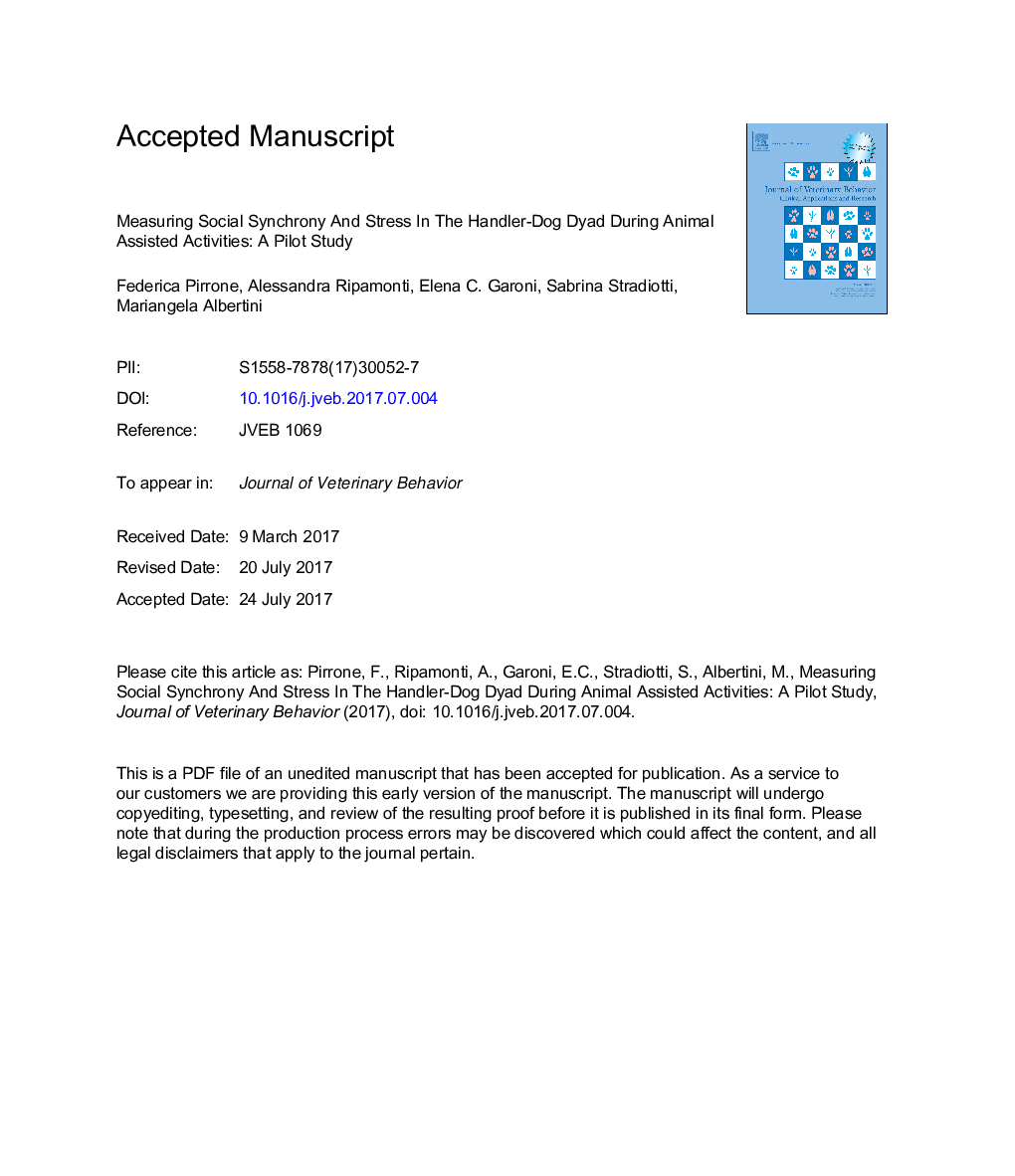| Article ID | Journal | Published Year | Pages | File Type |
|---|---|---|---|---|
| 5535975 | Journal of Veterinary Behavior: Clinical Applications and Research | 2017 | 33 Pages |
Abstract
Synchrony-the coordination of behavior between interacting partners-is a complex phenomenon requiring the perception and integration of multimodal communicative signals. Originally conceptualized by developmental psychologists to study the human-human relationship, it could also apply to cross-species interactions. Here, we examined synchrony patterns as a potentially important mechanism to evaluate human-dog interactions during animal-assisted activities. Four dog handler-dog dyads were videotaped before (T0), during (T1), and after (T2) 45-minute sessions of animal-assisted activities and coded for the following synchrony patterns: gaze synchrony, joint attention, and touch synchrony. Both partners' salivary cortisol and heart rate and dogs' behaviors were measured to identify any signs of stress that would lower levels of synchrony. All dyads showed synchronous behaviors in T0 and T1, whereas these were absent in T2. On average, the highest frequency was recorded in T1 (P < 0.05), particularly with regard to joint attention. All dogs fulfilled most of their handler's cues (74%; P < 0.05) while working with a patient, showing appropriate levels of cooperation. No stress-related signs were detected in either the dogs or their human handlers. These findings highlight the human-dog bonding as one prototypical context for studying the biologic basis of cross-species social synchrony. This may also generate evidence-based knowledge that can help strengthen the scientific foundation of current canine-assisted intervention practices.
Related Topics
Life Sciences
Agricultural and Biological Sciences
Animal Science and Zoology
Authors
Federica Pirrone, Alessandra Ripamonti, Elena C. Garoni, Sabrina Stradiotti, Mariangela Albertini,
